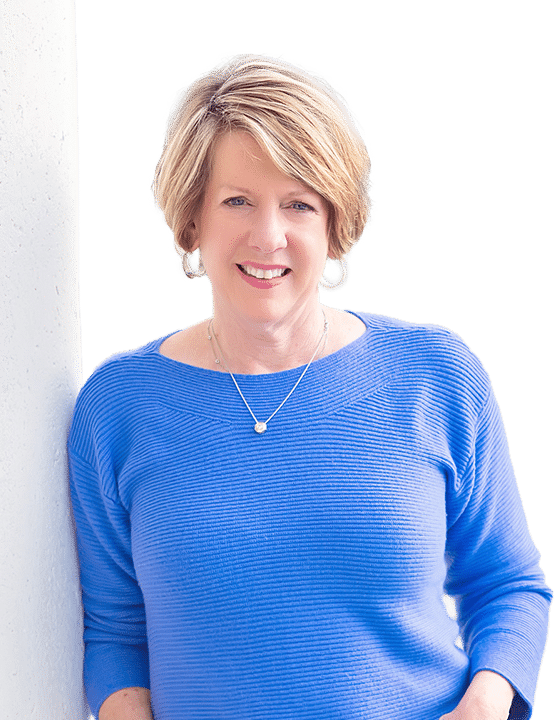Here’s a shocking statistic. Women live to an average of 81 years. But only 63 of those years are vibrant and healthy. Learning this certainly opened MY eyes!
Most of us grew up hearing that the secret to a “good life” was living as long as possible. Lifespan was the goal. But here’s the truth… lifespan only tells you how many birthdays you’ve had. It says nothing about how well you’re living.
Enter healthspan; the years you spend free from serious disease or disability, living with the energy, mobility, and mental sharpness to fully enjoy the things you want to do.
Imagine two women who both live to be 90. One spends her last 25 years with chronic pain, limited mobility, and a list of medications as long as her arm. The other remains active, independent, sharp, and engaged until her final few years. Same lifespan. Very different healthspan. I’m choosing the second approach!
For midlife women, especially those navigating perimenopause and beyond, healthspan is where your focus needs to be. And your 40’s and 50’s are the time to lay the foundation for how you’ll live in your 60s, 70s, and 80s.
Why healthspan matters more than lifespan
Women are living longer than ever, but according to research, the average woman spends the last 12 to 14 years of her life with at least one major chronic condition.
That means many of us will spend over a decade surviving instead of thriving. But it doesn’t have to be that way. With the right strategies, you can push those years of decline back, keeping your healthy years as long as possible.
How the VIBRINT principles extend your healthspan
I created the VIBRINT framework to give women a clear roadmap for living longer and better. Each pillar addresses a core area of health that directly impacts how you age.
1. Vital Rest & Recovery
Poor sleep and unmanaged stress accelerate aging. Chronically high cortisol levels are linked to muscle loss, weight gain, brain fog, and an increased risk of chronic diseases.
Prioritizing quality sleep, daily stress relief, and recovery practices helps your body repair itself, balance hormones, and protect brain function. Think of rest as your daily investment in resilience.
Practical tips:
- Try to get 7–9 hours of sleep each night. I know good sleep can be hard to get in perimenopause and beyond, but it is not impossible. Estrogen changed my sleep life 1000%, so you might want to ask your healthcare provider about that or check out my sleep stack here.
- Create a wind-down routine (dim lights, avoid screens, relax your mind)
- Try mindfulness, yoga, or nature walks to lower stress. If something else helps center and calm you, then do that instead if these ideas don’t speak to you.
2. Intentional Nutrition
Food is more than fuel—it’s information for your cells. The right nutrients can lower inflammation, support hormone balance, protect your gut, and help prevent age-related disease.
Pack your diet with whole, nutrient-dense foods and protein to maintain muscle, plus healthy fats for brain and hormone health. Reduce ultra-processed foods that drive inflammation and blood sugar swings.
Practical tips:
- Fill half your plate with colorful vegetables
- Include protein at every meal (aim for at least 30-35 grams/meal or around 100 gm day if you do not eat 3 meals a day.
- Limit added sugar to protect your brain and metabolism
3. Body Strength & Movement
Muscle mass is the single biggest predictor of longevity and independence as we age. Yet women lose muscle and bone density faster after menopause due to declining estrogen.
Resistance training and regular movement keep bones strong, improve balance, and help maintain a healthy weight.
Practical tips:
- Lift weights 2–3 times per week. I HIGHLY recommend working with a trainer to start with to help you create a plan and teach you proper form.
- Include mobility work and balance exercises
- Move throughout the day—don’t let workouts be your only activity

Want relief from the symptoms of perimenopause?
You’re in the right place.
You don’t have to suffer. I can help you balance your hormones and get your mojo back!
4. Regenerate with Hormones & Testing
Hormones are master regulators for metabolism, mood, and energy. When they shift in midlife, they affect almost every system in your body.
Functional testing helps you identify imbalances and take action early before symptoms turn into disease. Hormone optimization can protect your brain, bones, heart, and quality of life.
Practical tips:
- Work with a knowledgeable provider who understands midlife women. Access to menopause care is more available than ever due to all the telehealth platforms that have popped up. But most of the providers who work for these companies are NOT experts. Their care is protocol-driven, not personalized.
- Test, don’t guess, when it comes to hormones, thyroid, and nutrient status
- Reassess regularly as your needs change.
5. Intelligent Supplementation
Supplements aren’t a replacement for a healthy lifestyle, but they can fill gaps and target areas that need extra support. For example, vitamin D for bone and immune health, magnesium for sleep and muscle function, or omega-3s for brain and heart health.
The key is personalization—what works for your best friend may not be right for you.
Practical tips:
- Test levels before supplementing. I can help you with that!
- Choose high-quality, third-party-tested brands
- Reevaluate needs annually or after major life or symptom changes
6. Nurture Purpose & Connection
Studies show that a strong sense of purpose can add years to your life. There is an epidemic of loneliness in this country, and it can be as bad for your health as smoking. Social connection protects against depression, cognitive decline, and even early death.
It’s easy to put ourselves last, but nurturing relationships and pursuing activities that bring you joy is as important as diet and exercise.
Practical tips:
- Make time for friendships and family
- Volunteer or mentor in ways that matter to you
- Explore hobbies that light you up
7. Thrive with Mental Agility
Cognitive decline isn’t inevitable. Your brain thrives on novelty, challenge, and learning. Neuroplasticity means you can strengthen neural connections and even grow new ones at any age. This is why I take piano lessons!
Practical tips:
- Learn a new skill or language
- Engage in activities that require focus (music, art, puzzles)
- Limit multitasking and be fully present in tasks
The payoff of focusing on healthspan now
When you integrate the VIBRINT principles, you’re not just lowering your risk of chronic disease; you’re actively designing a future where you can travel, play with grandkids, run your business, or hike that bucket-list trail (Camino de Santiago, anyone?) without your body holding you back.
It’s never too early or too late to start. Your 80-year-old self will thank you for the choices you make today.
Final Thought
The question isn’t “How long will I live?” The real question is “How well will I live?” Lifespan is the number. Healthspan is the quality. And you get to influence both.
If you want a clear, personalized plan to extend your healthspan, let’s talk. Together we can create a strategy that keeps you strong, sharp, and full of life—year after year.
References
- Crimmins EM, Zhang Y, Saito Y. Trends Over 4 Decades in Disability-Free Life Expectancy in the United States. Am J Public Health. 2021;111(5):854-862. doi:10.2105/AJPH.2020.306148
- Centers for Disease Control and Prevention. Life Expectancy. 2023.
- Seals DR, Melov S. Translational Geroscience: Emphasizing Function to Achieve Optimal Longevity. J Gerontol A Biol Sci Med Sci. 2014;69(Suppl 1):S1-S3. doi:10.1093/gerona/glu050
Dr. Anna Garrett is a menopause expert and Doctor of Pharmacy. She helps women who are struggling with symptoms of perimenopause and menopause find natural hormone balancing solutions so they can rock their mojo through midlife and beyond. Dr. Anna is the author of Perimenopause: The Savvy Sister’s Guide to Hormone Harmony. Order your copy at www.perimenopausebook.com.
Dr. Anna is available for 1-1 consultation. Find out more at www.drannagarrett.com/lets-talk




